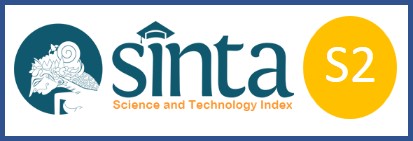Empowerment of Agroindustry Groups in An Effort to Accelerate East Java's Economic Growth
Downloads
The majority of the Indonesian population, especially in East Java live in rural areas, and most are farmers. Then to the economic development of rural farmers as a unity between the agricultural sector and small industrial group aimed at empowering agroindustry. Agroindustry is the best answer, since it relates to the rear (backward linkage) and the linkage to the front (forward linkage) long. Empowerment of agroindustry in itself is not easy, a lot of problems to deal with, among others: (1) the ability of the technology used is not optimal, (2) the quality of human resources (HR), (3) coordination and synchronization institutional program, (4) creation of business climate conducive. The government has implemented fiscal policy to encourage the use of small industrial products in order to export, encouraging the growth of business-incubation as well as the development of "ancillary industries ‘' through tax relief, monetary policy to support the financing of capital investments and working capital through credit schemes specifically tailor our flexible, development financial institutions, administrative and real for the simplification of licensing procedures and investment, import-export procedures, joint development with major industry in the country and abroad, the implementation of the Small Business Act, especially in managing the trade patterns and the pattern of payments through the backup market. If these four indicators are met and determined government policy will spur the growth of the local economy, so it could eventually resolve the problems in the village.
Arsyad, Lincolin. (1992). Pembangunan Ekonomi. Edisi 2. Yogyakarta: STIE YKPN.
Austin, J. E. (1981). Agroindustrial project analysis. Johns Hopkins Univ. Press.
Djalaludin, Ahmad. (2012). Perspektif Islam tentang Kepemilikan Negara atas Tambang di Indonesia. Tidak dipublikasikan. Malang: Disertasi Program Doktor Ilmu Ekonomi, Fakultas Ekonomi dan Bisnis Universitas Brawijaya.
Dominguez, P.G. and Adriono, L.S, (1994). BIMP-EAGA Agroindustrial Cooperation: a proposed frame work and plant of action. USM.
Hubeis, Musa. (1997). Menuju Industri Kecil Profesional di Era Globalisasi Melalui Pemberdayaan Manajemen Industri. Orasi Ilmiah Guru Besar Tetap Ilmu Manajemen Industri IPB, Bogor.
Kurniawaty. (2002). Strategi Pengembangan SDM Agroindustri. http://www.pikiranrakyat.com/cetak/0702/05/01/htm. Tanggal (14 Oktober 2002)
Mangunwidjaja, D. dan Sailah, I. (2009). Pengantar Teknologi Pertanian. Bogor: Penebar Swadaya.
Sioekartawi. (2000). Pengantar Agroindustri. Jakarta: PT, Raja Grafindo.
Soewono, L. (2005). "Pemanfaatan Teknologi Pascapanen dalam Pengembangan Agroindustri”. Prosiding Seminar Nasional Teknologi Inovatif Pascapanen untuk Pengambangan Industri Berbasis Pertanian. Balai Besar Penelitian dan Pengembangan Pascapanen Pertanian. Bogor.
Sugiyono. (2011). Metode Penelitian Kuantitatif , Kualitatif dan R&D. Bandung: Alfabeta.
Sukirno, Sadono. (2011). Makroekonomi Teori Pengantar. Jakarta: PT. Raja Grafindo Persada.
Zed, Mestika. (2004). Metode Penelitian Kepustakaan. Jakarta: Yayasan Obor Indonesia.
Copyright (c) 2017 Sri Eka Astutiningsih, Citra Mulya Sari

This work is licensed under a Creative Commons Attribution-ShareAlike 4.0 International License.
JIET (Jurnal Ilmu Ekonomi Terapan) (p-ISSN: 2541-1470; e-ISSN: 2528-1879) is licensed under a Creative Commons Attribution-ShareAlike 4.0 International License
Authors who publish with JIET (Jurnal Ilmu Ekonomi Terapan) agree to the following terms:
- The journal allows the author to hold the copyright of the article without restrictions.
- The journal allows the author(s) to retain publishing rights without restrictions
- The legal formal aspect of journal publication accessibility refers to Creative Commons Attribution ShareAlike 4.0 International License (CC BY-SA).












